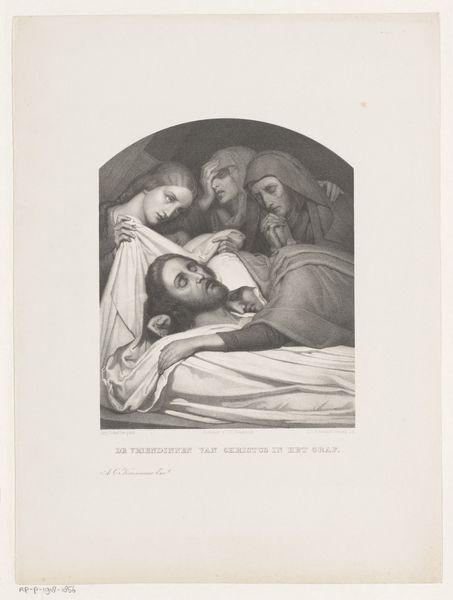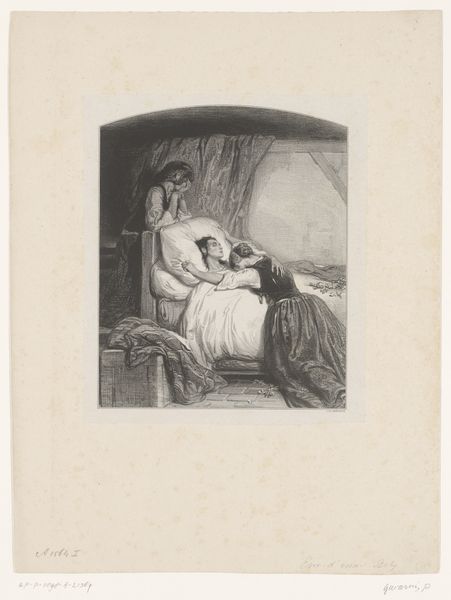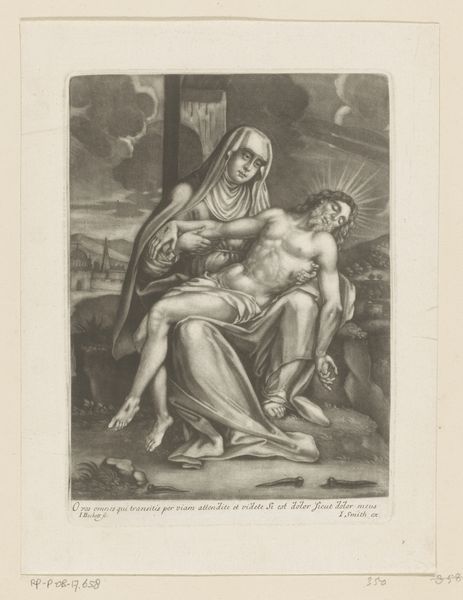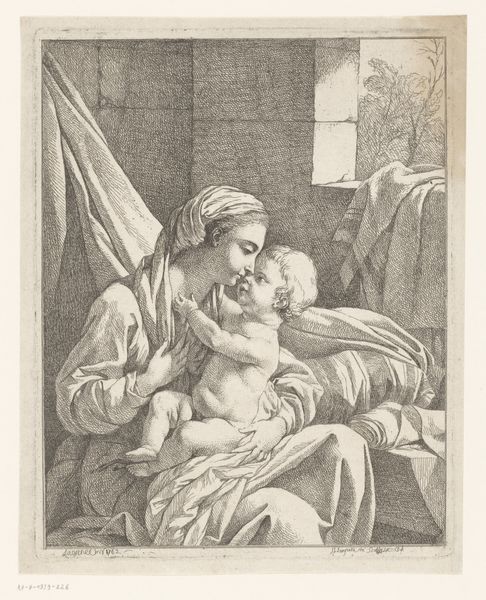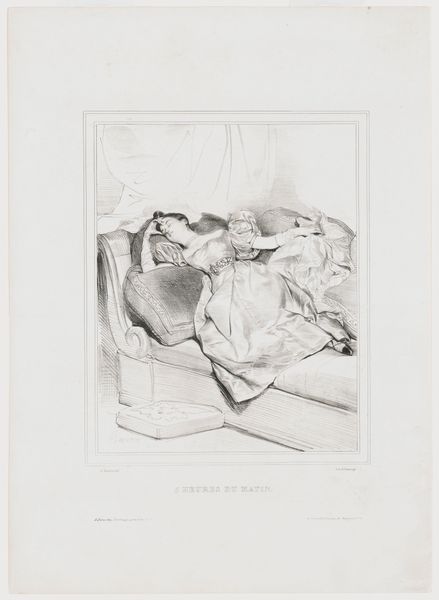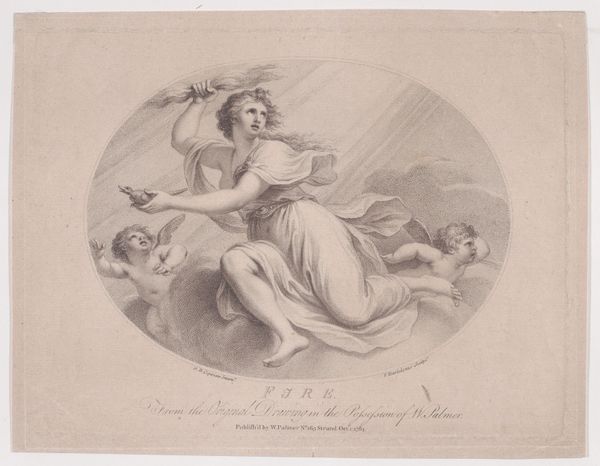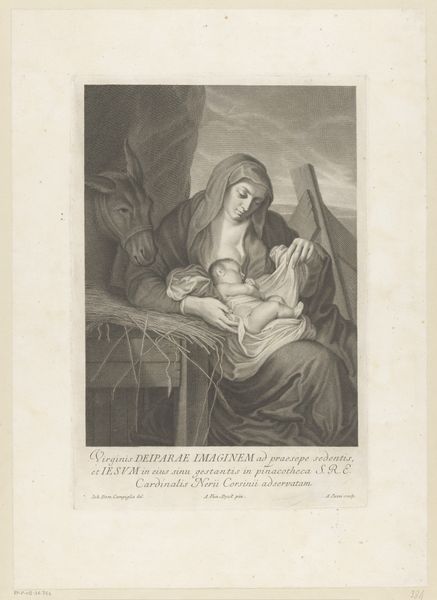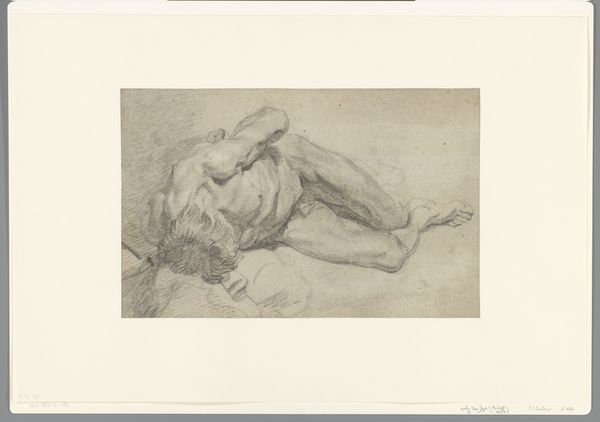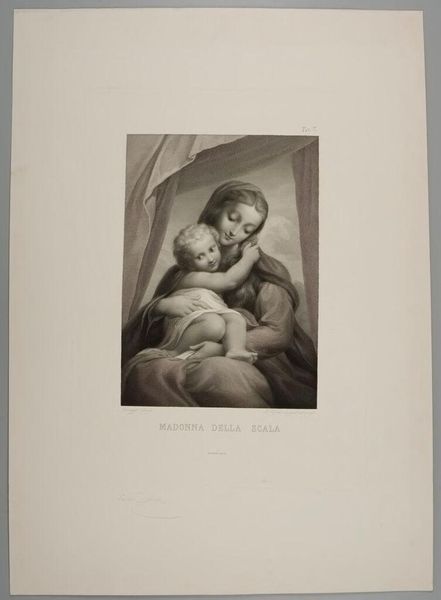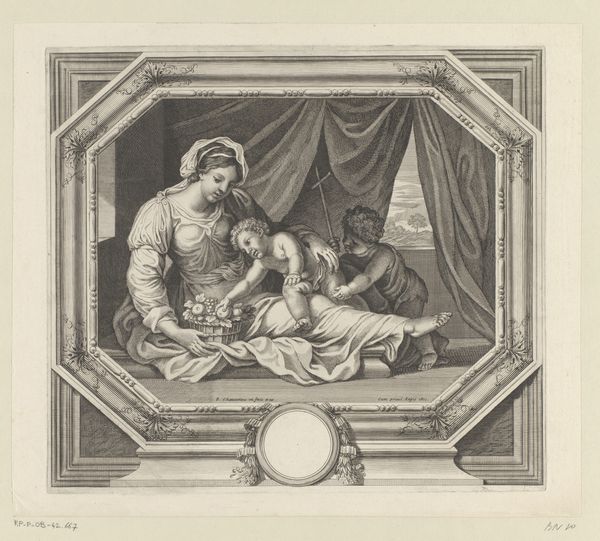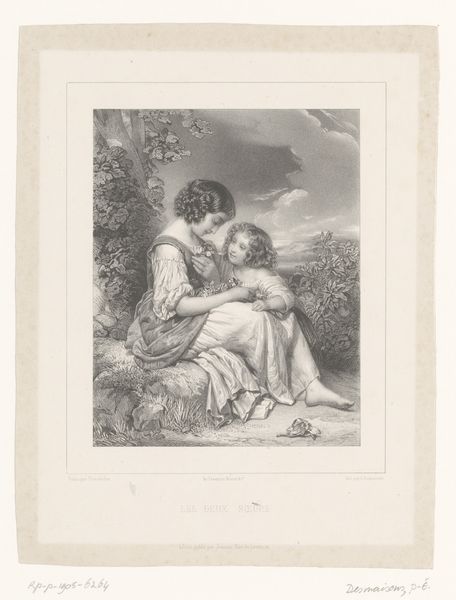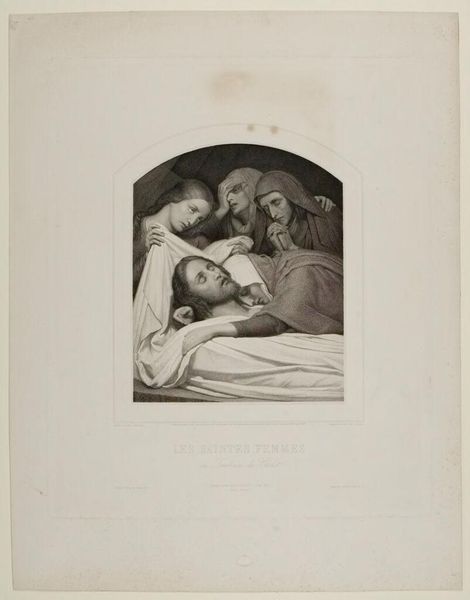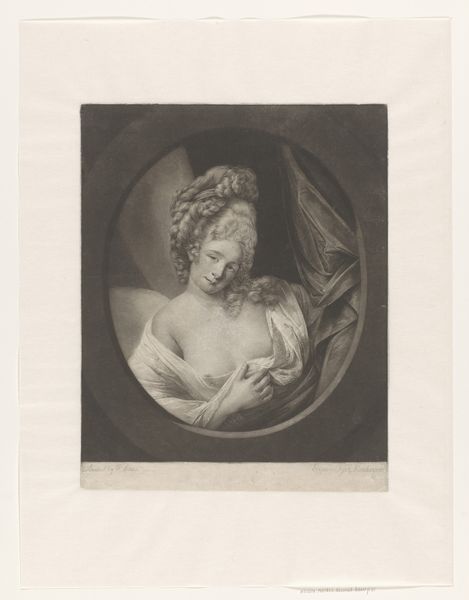
print, engraving
#
portrait
# print
#
figuration
#
portrait reference
#
romanticism
#
portrait drawing
#
history-painting
#
engraving
#
portrait art
Dimensions: height 636 mm, width 493 mm
Copyright: Rijks Museum: Open Domain
Curator: This engraving from 1843 by Bernard Romain Julien, currently housed in the Rijksmuseum, depicts an angel watching over a sleeping child. Editor: The composition strikes me as both serene and subtly dramatic. The soft gradations of light and shadow really enhance the otherworldly feel, don't you think? Curator: Absolutely. The romanticism movement greatly influenced this style of portraiture, a connection clearly visible in the angel's idealized features. It's crucial to examine the materials as well: the nature of engraving on paper allowed for broad distribution. It becomes an easily accessed commodity showing high subject matter. Editor: True, the medium lends itself to replication and dissemination, and is cost effective. However, if you look closely at the intricate linework, particularly in the angel's wings and the child's hair, you will see that it possesses great formal elegance, an artistic effect amplified by the delicate tonal range and contrasting values of dark and light. The angel, rendered almost in full light, watches the dark shrouded child. This draws attention to the themes of security. Curator: These prints were not merely aesthetic objects, but also conveyors of social values. Consider the historical context of its production. Prints like these played a pivotal role in shaping bourgeois family values and sentimental representations of childhood and innocence during the Industrial Revolution. Was it meant as a comfort? Perhaps something mass produced, to reassure common folks and workers about children safety? Editor: A valid thought. What really strikes me is the artist's successful manipulation of form to elicit feelings of tenderness and protectiveness, through scale, arrangement of subjects, and, of course, color intensity. In essence, all art making is political at this time of revolution, right? Curator: Indeed. Understanding the economic and social factors surrounding its creation provides us with a richer understanding of its purpose. The artist creates an ethereal, upper-class look. And who are most buyers during this period? And to whose values and taste does the art conform? Editor: Examining Julien's artistic choices certainly highlights broader questions about belief, consumerism, and social anxiety. Thanks for illuminating all of that.
Comments
No comments
Be the first to comment and join the conversation on the ultimate creative platform.
